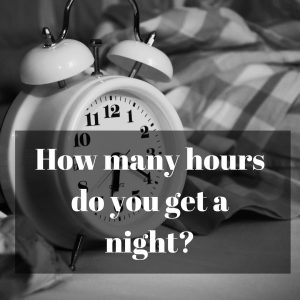The importance of having a well functioning jaw cannot be understated! Do you get jaw pain or clicking? Do you also suffer from headaches or neck pain? This Body@Boronina blog post focuses on our jaw joints – what we use them for, how these joints can cause issues and what we, as Melbourne-based Osteopaths, can do to help.
A Bit Of Anatomy…
The jawbone (or mandible) is the bone which hangs from your skull, creating the lower part of your head. It houses the lower teeth and attaches either side of the head just in front of the ears. Put your fingers just in front your ears in line with the ear holes, gently open and close your mouth and you will be able to feel movement at these joints. These joints are called the temporo-mandibular joints, or TMJ. Movement at these joints occur when we open and close our mouth during activities such as eating and talking. As well as opening and closing our jaw, we can move it side to side and forwards and backwards!
Movements of the jaw, such as chewing, are controlled by various muscles. Three main muscles close our mouth, and one main muscle aids with opening it. This makes sense when you think about gravity’s effect on the body. We need a bit more help to close our mouth and bite into our food than we do to open it and let it hang.
Problems With The TMJ
A common jaw condition osteo’s treat is TMJ dysfunction. This is a relatively broad term we use to describe an issue with this specific joint which affects women twice as much as men. Problems can arise from many structures in and around the joint, including the muscles, joint surfaces and a small disc which sits inside. Muscle imbalances are common and can lead to stiffness or pain (or both) when opening and closing our mouth. Tightness in the surrounding muscles could be a result of trauma to the jaw (like with being punched or hitting your chin after a fall), clenching when sleeping (known as ‘Bruxism’), a neck dysfunction/restriction, or from dental problems such as having an uneven bite. People who are highly stressed will often clench their jaw in their sleep, which may lead to waking up with a sore jaw or headaches.
Inside the joint itself is a small disc which slides and moves during jaw movements. Sometimes this disc can become ‘displaced’ and may not slide and move as smoothly as it should. This may often lead to a jaw that clicks or cracks when opening the mouth. For the most part, the click is painless, however some people may experience pain alongside a click. In some severe cases the jaw may temporarily lock, which as you can imagine would be quite distressing to experience. Pain from the jaw joints can sometimes also present as ear pain.
Osteopathic Treatment For TMJ Dysfunction
Treatment for TMJ dysfunction will greatly depend on the cause of the dysfunction. A simple muscle imbalance may be corrected by soft tissue release of the jaw muscles, joint mobilisation, and corrective mobility and strengthening exercises. It is rarely that simple though. More often than not, a TMJ dysfunction will come hand in hand with a problem in the neck and shoulders, be it restriction of movement or poor stability and strength in the region.
An osteopathic approach to treating TMJ dysfunction will include a thorough assessment of the head, jaw, neck, shoulders and mid-back (and quite possibly further afield than that!). Because of the proximity of the jaw and neck, you rarely get dysfunction in one without the other. Your osteo will question you about your occupation, sleeping habits, hobbies, and current stress levels – all of which may be playing a part in your condition. If your osteo believes your TMJ issues stem from a dental issue, they may advise a visit to the dentist for a check-up as sometimes problems can be resolved with input from both professions. If clenching is an issue, you may find it useful to wear a gum shield or mouth guard to bed to alleviate pressure on the jaw and teeth. We appreciate it’s not the best look in the world, but it can be a game changer! Stress management including breathing, relaxation and mindfulness techniques can also be a great way to beat that stress in your life. Don’t worry, your osteo will have some tricks up their sleeve for this too. Always let them know if you feel like you need help with this aspect of your life.
If you think you might have a jaw problem, then don’t keep it tight-lipped. Open up that mouth and reach out to us (by talking we mean!). We’ll have you ready for comfortably eating and drinking in no time! Call the team at Body@Boronia today on 03 9762 9445 to chat about TMJ Dysfunction or any other osteo issues you might be having.
References
- National Institute of Dental and Craniofacial Research. 2018. Prevalence of TMJD and its signs and symptoms. [Online]. Available from: nidcr.nih.gov/research/data-statistics/facial-pain/prevalence. [Accessed 08 October 2019]
- Poluha, RL. et al. 2019. Temporomandibular joint disc displacement with reduction: a review of mechanisms and clinical presentation. JAOS. 27. e20180433. ncbi.nlm.nih.gov/pmc/articles/PMC6382319
- Harvard Health Publishing. 2019. Unlocking the jaw: Temporomandibular joint (TMJ) dysfunction. [Online]. Available from: health.harvard.edu/blog/unlocking-the-lock-jaw-temporomandibular-joint-tmj-dysfunction-2017022211146. [Accessed 08 October 2019]





